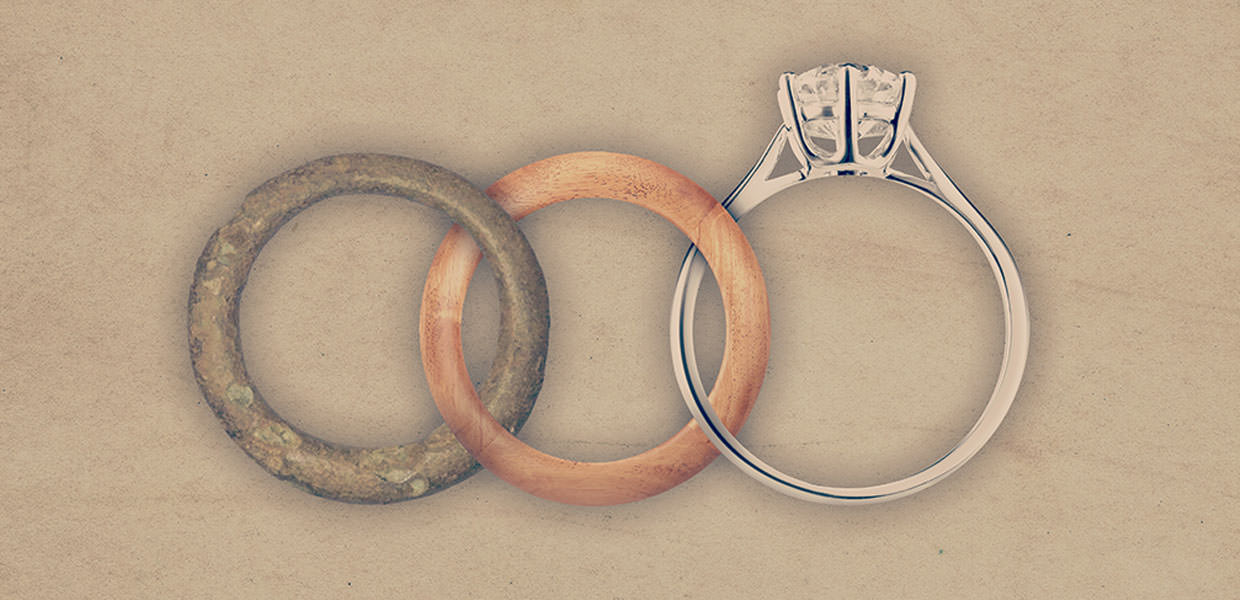The engaging history of engagement rings
February 5th, 2020

True love is as old as time itself. The tradition of wearing a ring—or giving one to the person you’re committed to—goes back thousands of years. Many ancient cultures considered the circle to be the symbol of eternity (no beginning or end). They also believed that the hole in the center of the ring represented a gateway or door, that lead to certain things. The act of sharing a ring was rich with meaning. And while the materials used to make these different types of rings have certainly changed quite drastically over the years, the symbolic significance still remains.
So let’s look at the evolution of the engagement ring.
Prehistoric times: Our linguistically limited forefathers didn’t need to write poetry to convince their chosen mate to be theirs. They simply braided grass into cords and tied these around a wrist, ankle, or even waist.
2800 BC: We’re fairly familiar with the elaborate burial rituals of the Egyptians. What’s not as well known is that they were buried wearing rings made of silver or gold wire on the third finger of their left hands. That finger was believed to be connected directly to the heart by the vena amoris.
200 BC: Pliny the Elder, a Roman author, naturalist, and philosopher, is credited with explaining that the groom gives the bride two different rings. First a gold one to wear during the wedding ceremony and at special events, then an iron ring at home, to signify the legal agreement of the marriage.
100 BC: Sultans and sheiks begin using puzzle rings, a type of jewelry ring made up of four, six, eight, or twelve interconnected rings, to tag each of their wives.
1217: There is a trend of seducing girls into mock marriage with plant-made rings. The ever stern bishop of Salisbury puts an end to it.
1477: Archduke Maximilian of Austria proposed to Mary of Burgundy with the first-ever diamond ring that has flat pieces of diamond, forming the letter “M.”
1800s: Mr. Darcy’s contemporaries in the Victorian era use human hair to make jewelry and spell out names with gemstones.
1860s: Diamonds are discovered in South Africa.
Early 1900s: The engagement ring is popularized and marketed as the true symbol of marriage.
Present day: Morgan Jewelers goes a step further and combines the best selection of diamond rings with excellent customer service. And in the process, positively redefines the experience of buying a ring and sets a new standard for what to expect.
So now that you’re more familiar with the history of engagement rings, there is one thing to keep in mind: If you’re thinking about getting engaged, we can help you find the perfect ring.

 Call
Call Email
Email Directions
Directions Appointment
Appointment